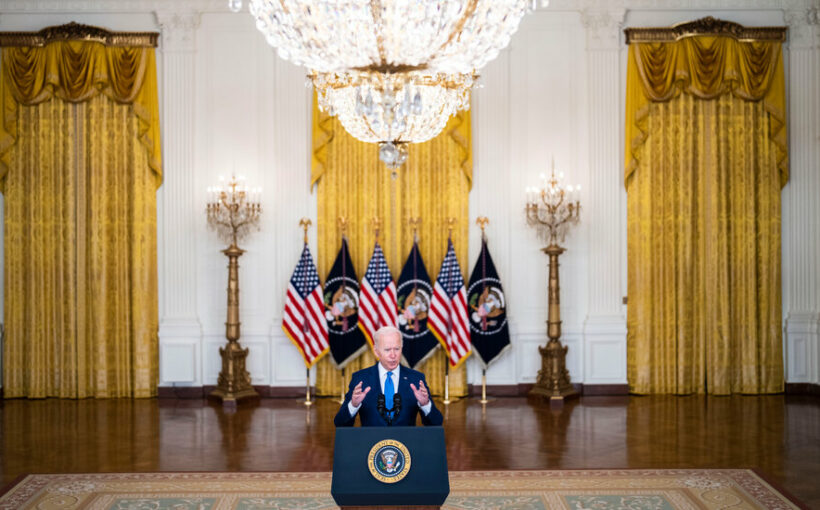A plan for the economy, education, immigration, climate and more binds disparate Democratic lawmakers, but the proposal risks sinking under its own weight.
By Jim Tankersley
WASHINGTON — No president has ever packed as much of his agenda, domestic and foreign, into a single piece of legislation as President Biden has with the $3.5 trillion spending plan that Democrats are trying to wrangle through Congress over the next six weeks.
The bill combines major initiatives on the economy, education, social welfare, climate change and foreign policy, funded in large part by an extensive rewrite of the tax code, which aims to bring in trillions from corporations and the rich. That stacking of priorities has raised the stakes for a president resting his ambitions on a bill that could fail over the smallest of intraparty disputes.
If successful, Mr. Biden’s far-reaching attempt could result in a presidency-defining victory that delivers on a decades-long campaign by Democrats to expand the federal government to combat social problems and spread the gains of a growing economy to workers, striking a fatal blow to the government-limiting philosophy of President Ronald Reagan that has largely defined American politics since the 1980s.
But as Democrats are increasingly seeing, the sheer weight of Mr. Biden’s progressive push could cause it to collapse, leaving the party empty-handed, with the president’s top priorities going unfulfilled. Some progressives fear a watered-down version of the bill could fail to deliver on the party’s promises and undermine its case for a more activist government. Some moderates worry that spending too much could cost Democrats, particularly those in more conservative districts, their seats in the 2022 midterm elections, erasing the party’s control of Congress.
The legislation, which Democrats are trying to pass along party lines and without Republican support, contains the bulk of Mr. Biden’s vision to overhaul the rules of the economy in hopes of reducing inequality and building a more vibrant middle class. But its provisions go beyond economics.
Democrats hope the package will create a pathway to citizenship for as many as eight million undocumented immigrants, make it easier for workers to form unions, and lower prescription drug costs for seniors. They want to guarantee prekindergarten and community college for every American, bolster the nation’s strategic competitiveness with China and stake an aggressive leadership role in global efforts to fight climate change and corporate tax evasion.
The plan includes a large tax cut for the poor and middle class, efforts to reduce the cost of child care and expand access to home health care for older and disabled Americans and create the first federally guaranteed paid leave for American workers.
It is almost as if President Franklin D. Roosevelt had stuffed his entire New Deal into one piece of legislation, or if President Lyndon B. Johnson had done the same with his Great Society, instead of pushing through individual components over several years.
“The president is on the cusp of achieving a major expansion in public education, one of the largest expansions of the social safety net, the largest investment in climate change mitigation” and overhauls in labor law and drug pricing, said Patrick Gaspard, a former Obama administration official who is now the president of the liberal Center for American Progress in Washington.
Source: Read Full Article


